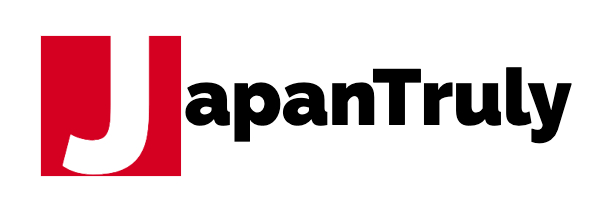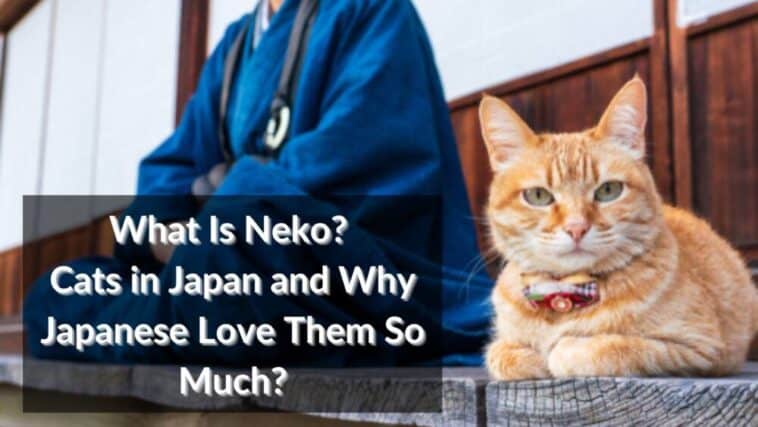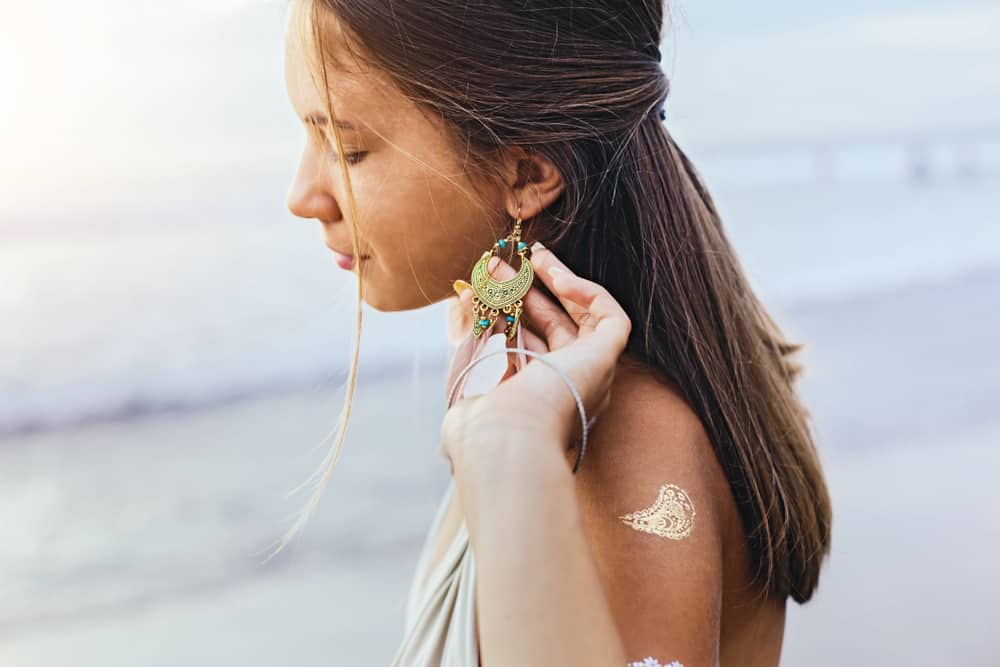Have you ever wondered why cats are so popular in Japan? Read on to find out more about the history and significance of cats in Japan AKA Neko in Japanese.
If you like cats, then Japan is the country to visit. Let’s take a look at the Maneki-Neko and why on earth are they so popular.
With Cats, you either love them or you don’t. There is no in-between. But if you are Japanese, chances are that your love for them is bordering on obsession!
From cartoons to clothing, from books to food, the Japanese love their cats as they make up a huge part of their daily life.
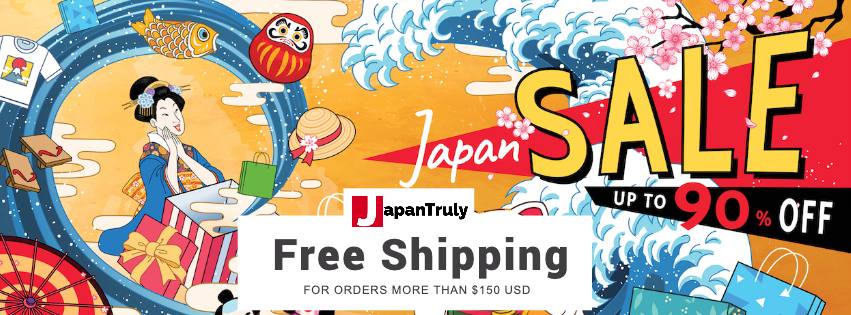
If you have ever been to Japan or other parts of Asia, it is hard to miss the cute small Maneki-Neko ornament waving at you.
Today, the Maneki-Neko cat is an iconic lucky charm and recognizable all over the world, with a fascinating backstory.
Cats are often thought of as mysterious and elegant creatures in Japan. But why do these cats play such a huge role in Japanese culture? Let us find out.
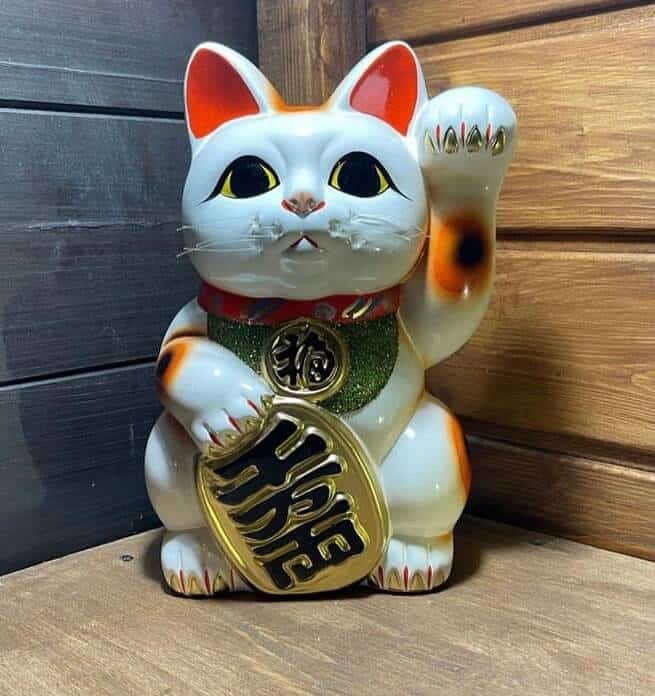
- Related: Do The Japanese Kill And Eat Dolphins?
- Related: Significance And Meaning Of Itachi In Japanese Culture
- Related: Significance Of Kitsune Foxes In Japanese Culture
Page Contents
What is Maneki-Neko?
The Maneki-Neko or beckoning cat (招き猫) is believed to bring good fortune to many businesses and owners.
It also comes with different names such as the money cat, happy cat, lucky cat, and welcoming cat.
It is a very popular Japanese figurine that depicts a Japanese Bobtail cat with its paw raised in a beckoning gesture.
The cat has its paws moving in back and forth swinging motion as if it’s waving in good fortune for its owners.
Some even have motorized arms so that they can wave all day long.
You will typically find them displayed at the entrances of restaurants, bars, stores and so on to entice customers to come inside.
Story behind Neko Cats
Origin
The Maneki Neko Cat first made its appearance in the Edo Period (1615 -1868).
There are numerous stories about the origins of this lucky cat with each one providing their own silver insight into the power of this cat.
One legend tells the tale of a modern traveler Ii Naotaka who took shelter under a tree during a huge storm.
He noticed a little cat waving at him and directed him towards the temple. When he moved, the tree was struck by lightning.
So he returned the favor by making a generous donation to the temple which is known as the famous Gotokuji Temple today.
One more tale said that a geisha Usugumo who adored her cat, but the feudal lord beheaded it because it wouldn’t stop pulling on her robes during one formal ceremony.
The cat’s head went flying through the air and killed a snake who was actually trying to kill the geisha.
A statue of the cat with its paws up was created and given a place of honor to cheer the geisha.
The final legend tells the story of a poor old woman who could not afford to feed her cat.
When she was going to abandon it, the cat appeared in the dream and instructed her to make a clay cat figurine and sell it.
She followed the advice and sold clay figurines of the cat for a good amount of money.
Thus, from these stories, the tradition of Maneki Neko was born.

What is the Meaning Behind Maneki Neko?
A cat with its paw up doesn’t really look like its beckoning, there are different meanings behind this.
You will usually see three different styles of Maneki Nekos with either both paws up, the right paw up or their left paw up.
A Maneki Neko beckoning with its left paw is inviting or welcoming people inside the building where it sits.
A Maneki Neko beckoning with its right paw is said to bring good fortune, luck and money in businesses.
A Maneki Neko with both paws raised is a combination of the above two that invites people in and is said to bring good fortune and money too.
It is widely used in stores, restaurants and other business establishments to attract more visitors.
According to Feng Shui principles, the left palm raised up usually attracts women while the right palm raised up is good for attracting men.
For example, in beauty salons or other women-centric stores, a Maneki Neko with a raised left palm will be seen.
Accessories of the Maneki Neko
If you look closely at the Maneki Neko, you will notice that each of the lucky charm items have a special significance.
- A Money Bag that symbolizes luck, along with wealth.
- A carp (koi) or other fish symbolizes fortune and abundance.
- Maneki Neko often is seen holding a koban or gold coin that was used during the Edo period. They are seen with a coin marked 千万両 which is ten million ryo ( 1 ryo is equal to around 1000 USD in today’s worth).
- Fan or Drum that represents luck with the business. The drum symbolizes a shop that is overflowing with customers.
- Marble or Gemstone symbolizes wisdom and wealth.
- Neck decorations with collars, decorative bibs( worn for protection), and bells.
- Hyotan or Hollowed Gourds are containers for sake and over beverages. It was believed to be used by Fukurokuju, the god of wisdom and longevity to ward off evil and bring good luck.
Maneki Neko’s Colors & Component Meanings
Maneki Neko’s color can have different meanings and patterns to attract certain energies.
So, people match the color of the cat to the area of their life that needs an infusion of good luck. These include:
- Black: protection from enemies, evil spirits and threats
- Pink & Red: for good love and relationships
- Calico: this is the luckiest color, it is tri-colour and symbolizes wealth and prosperity
- Blue: wisdom and success
- Gold: money, wealth, and fortune
- White: positivity, purity, and happiness
- Green: good health and education
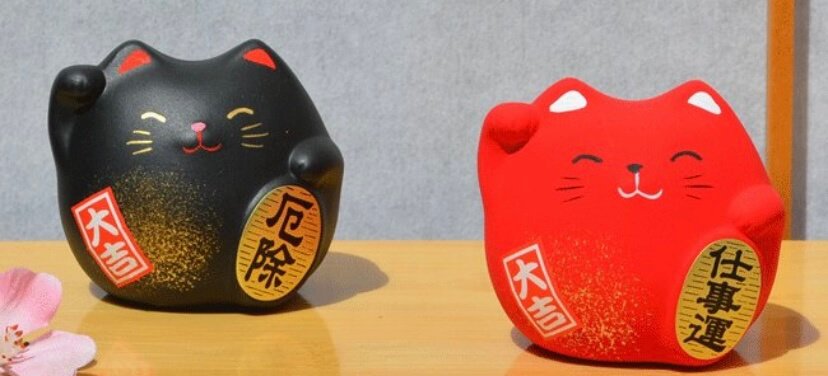
Placement for Maneki Neko
Did you know that even the placement of your money or good luck cat is important?
Here is everything you need to know to make sure your cat is placed in the most luckiest location.
The best place for the location of Maneki Neko depends on the kind of business establishment you are involved with.
For people using a Maneki Neko in their homes, the beckoning cat must be placed in the southeastern corner of the house. This also applies to people who have a home office.
For business establishments, offices, stores and shops, it should be placed at the entrance that is visible to the people entering so it must be placed in the northeastern area of the shop or business.
As mentioned earlier, you can also take advantage of the different colors of the Menaki Neko cats to determine the best placement for good fortune.
So if you choose a gold color, place it in the southeast corner of your room, home, office, or desk which will help create financial abundance.
You can also place your pink or red cat in the southwest area of your home or room to activate your luck in the love and relationship department.
Place your white cat in the north sector of a room for greater career opportunities.
Where Can You Find Maneki Neko?
There is no doubt that the Maneki Neko figurines are common across Japan, especially in souvenir shops, museums and shrines such as the Gotoku-ji in Tokyo.
Two museums that are worth checking out are the Manekineko Museum of Art and Maneki Neko Museum in Seto City contain a number of figurines.
What are Maneki Neko Made Of?
Maneki Neko are most commonly made of either ceramic or porcelain.
The individual sections like the paws, body, raised arm, head and so on are molded separately from wet clay and then they are glued together.
Before the figurine is baked in a kiln at high heat, the features of the cat are inscribed into the clay. Once it cools, the figurine is painted.
What Are Tokoname Lucky Cats?
In Tokoname city, there are Maneki Neko local cats called the Tokoname lucky cats.
Tokoname is the number one Maneki Neko producing region in Japan with a street called Maneki Neko Street containing around 40 sculptures.
Another famous place here is the Tokoname Central Shopping Arcade.
What is the lucky cat in Feng Shui?
While many believe that the Maneki Neko is waving, the cat is beckoning, which attributes a lot of positivity, luck, wealth, and customers towards it.
Feng shui practitioners have adopted Maneki Neko as a symbol of good luck.
Conclusion
Maneki Neko is found all over Japan in various forms in anime, pop culture, video games, specialty shops, decorations and so on.
There is even the Day of Maneki Neko, which is a fun, high-spirited holiday falling on September 29th, celebrating the happy figurines which are believed to bring so much luck to owners.
Personally, I have a little one that sits by my laptop as I work, so far I have not been attacked or something, that’s gotta count for something.
So, are you a fan of Maneki Neko? Do you own one?
If you wish to purchase your very own Maneki Neko figurine, go to a World Market near you or head on over to amazon where you will find a variety of options available.
Go ahead and enjoy your newfound, figurine with wealth and prosperity.
Do share this article with your friends.
Also Read:
- Chrysanthemum: Symbol Of Japanese Throne
- Meaning Of Lotus Flower In Japan And Its Significance
- Hanakotoba: Meaning Of Flowers In Japanese
